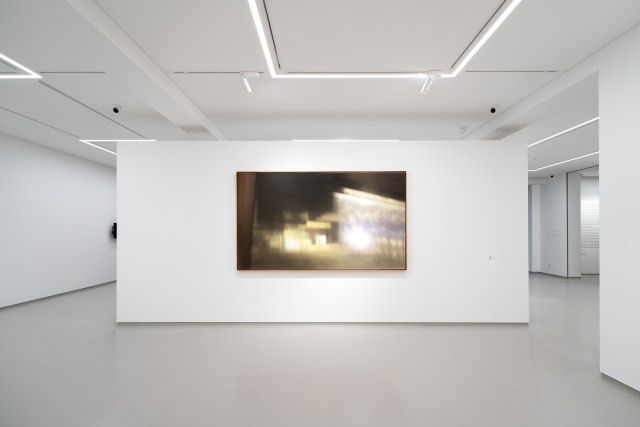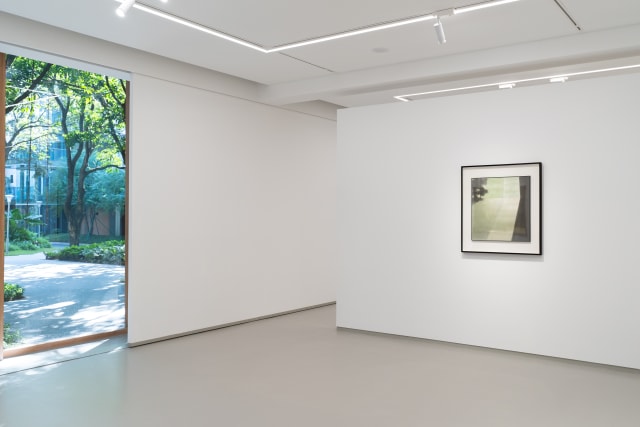The histories of Western landscape painting and Chinese landscape painting have a long-standing origin. Despite being in different cultural contexts, they have never detached themselves from the complex proposition of human observation and contemplation. When Professor Malcolm Andrews, a British scholar of art history, mentions "landscape," even just a casual look, people are already shaping and interpreting it in the process of viewing. This is not only about the transformation of the artist's way of seeing but is more prominently reflected in the shift in people's spiritual mindset. The changes in visual perception and concepts brought about by landscapes not only affect the way the external natural environment is viewed but also involve a depth of self-reflection and participation in the process of perception and transformation. This, in turn, influences artistic creation, capturing the essence with the brush, and thus establishing a self-awareness and logic in artistic creation.
Whenever Kang Haitao mentions the landscapes he has witnessed, a strong feeling always emerges. The scenes that may appear ordinary and unremarkable to others linger in his mind for a long time, until he presents them through painting. Perhaps landscapes unconsciously appear in the artist's innermost being. Early landscape paintings create a kind of tranquility after anxiety, providing a feeling of calmly peering into one's own inner self in the deep silence of the night. From the objective to the subjective, Kang Haitao's transition in the way he views landscapes is perfectly timed, forming a transition from figurative to abstract. Light and shadow, color blocks, composition—his experience and understanding of landscapes continuously change over time. From the objectified external to the internal perception, the colors on the canvas are constantly transformed within his inner self.
On the other hand, Kang Haitao's conscious approach to creation takes on a hazy and distant quality, as well as a focus and gaze from a distance. The clever integration of pigments and brushes not only does not disturb the orderliness of the composition but also adjusts the optimal "focus" between him and the canvas in the expression of strokes and lines. This makes the creation a lens that directly points to the inner self, sometimes clear and sometimes blurry. Perhaps for the artist, landscapes were originally the source of painting. However, when the abstract emotions within oneself resonate with real-life landscapes, the composition and expression of the image become a natural occurrence. Therefore, Kang Haitao's abstract landscapes have almost shed the inadvertent affectation and artifice, returning to a more profound contemplation of abstract artistic concepts that were prevalent among artists born in the 1970s.
As the inward-extending space permeates Yuan Yuan's canvases, what we see is another landscape of space—both personal and past, as well as potentially public or contemporary. In his space, we sense a strong connection between time and narrative. Yuan Yuan has mentioned that he is actively exploring the traces of inhabitation in space, delving more into the sense of ruins and past memories within that space. The subtle traces of human emotions in this static space give it a sense of passage, and all of this is harmoniously conveyed through his geometric structures and color harmonies. Yuan Yuan's creativity also stems from the reality of his own growth; he continuously repairs and records the memories in his heart with his brush. Besides texture, traces, and a strong sense of time, Yuan Yuan's works, like the strokes of oil paint, go beyond specific forms in an incidental manner. Within the traces, one can feel the reflections of memories and the reality of the present moment.
Yuan Yuan has mentioned that his working method is inward rather than outward. From the concrete to the abstract, his conceptualization and creation fully embody a nuanced logic of self. As the space is repeatedly pushed forward, it is discovered that feelings become the most powerful propeller. At this moment, the landscape in Yuan Yuan's paintings recreates the "third space," reflecting the reality at the edges while maximally encompassing the self. Materials and light undoubtedly help him realize these ideas detached from reality.
In this dual exhibition featuring Yuan Yuan and Kang Haitao, the artistic endeavors not only showcase each artist's individual perspectives on creation and artistic theories but also present their reflections and explorations of nature and the inner self through the formal language of light, shadow, and color tones. Both artists emphasize their individual approaches, respecting the inner self as they repeatedly navigate between the reality they inhabit and their emotions. The detached strokes and colors find expression in the silence, as each artist uses abstract elements to convey an alternative existence.
In a sense, whether it is landscapes or living spaces, the artists' visual experiences condense their understanding of reality and the concrete. They can succinctly summarize their working methods, thoughts, and experiences with refined blocks of color. Moving from the external to the internal, they authentically confront the inner world of freedom, silently gazing at the inside and outside of the canvas in the passage of time.
Director of Guangdong Art Museum
Wang Shaoqiang | Curator
11/2023
Gazing at the Scenery: Dual Exhibition by
Yuan Yuan and Kang Haitao
XY GALLERY
Artists
Yuan Yuan / Kang Haitao
Curator
Wang Shaoqiang
Duration
2023/12/08-2024/02/28








